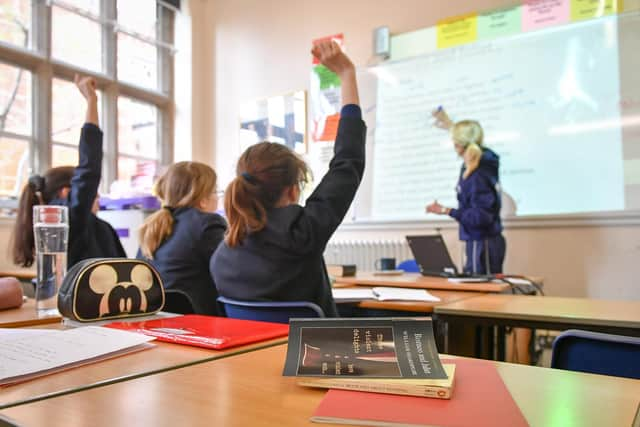Fewer first-choice places than ever for secondary pupils in Wigan
and live on Freeview channel 276
In April, pupils starting at primary and secondary state schools this year found out which school they would be attending.
Parents can put three to six preferences down for a state school of choice, the exact number varying between local authorities.
Advertisement
Hide AdAdvertisement
Hide AdSchools are ranked by order of preference, with pupils allocated to the highest school on the list for which they meet eligibility criteria.


New figures from the Department for Education show there were 3,874 applicants to secondary schools in Wigan this year.
Of these, 87.3 per cent were given a place at their first choice for the 2022-23 school year – down from 91.8 per cent the year before, and the smallest proportion since comparable data was first recorded in 2014-15.
Meanwhile, 95.8 per cent were allocated to one of the schools on their list – also down from the year before, when the same figure stood at 97.5 per cent.
Advertisement
Hide AdAdvertisement
Hide AdIf pupils do not receive an offer from any of their preferences, they are given a place at another school by the local council.
There are a number of factors that can potentially reduce a council’s ability to meet parental preferences.
These include instances in which parents choose to select just one preference on their application form rather than three, and also where parents express preferences for schools significantly further away from their homes.
But the biggest factor is often birth rates in a particular year, yet Wigan’s figures remain level with or better than the national average.
Advertisement
Hide AdAdvertisement
Hide AdCath Pealing, the local authority’s assistant director of education, said: “Birth rates naturally have a significant impact on the number of first preferences that can be met each year.
“Wigan borough is currently managing a high population in our secondary sector, which will continue for the next couple of years as larger primary cohorts move through the education system.
“Despite these challenges, Wigan borough has consistently performed above the national average when it comes to meeting parental preferences.
“In recent years, meanwhile, the birth rate in the borough has consistently fallen – leading to a surplus of places at reception level.
Advertisement
Hide AdAdvertisement
Hide Ad"This means we are more able to meet parental preferences in this sector.”
Across England, 83.3 per cent of more than 600,000 applicants are heading to their first choice secondary school, up from 81.1 last year.
But Emily Hunt, associate director at the Education Policy Institute think-tank, said these statistics only tell "part of the story".
"We know from our research that first choice offer rates vary considerably across the country, as does the availability of high performing schools to apply to.
Advertisement
Hide AdAdvertisement
Hide Ad"The criteria used to determine whether a pupil is offered a place can also make it difficult for pupils who are unable to live nearby.”
Across the North West, 92.9 per cent were allocated their first-choice primary, and 85 per cent of incoming secondary pupils landed their first pick.
Ms Hunt continued: “For those parents that have not been offered their first choice, many will consider the use of the appeals and waiting lists system.
"Our own research has shown that navigating these can be difficult, with pupils from more affluent backgrounds being more likely to succeed via these routes.”
The figures show 93.3 per cent of Wigan children were given their first primary school of choice, a rise from the 91.6 in the 2021-22 school year.
Almost every child was given a primary school place on their list, with 98.7 per cent being allocated to one of their preferences.
